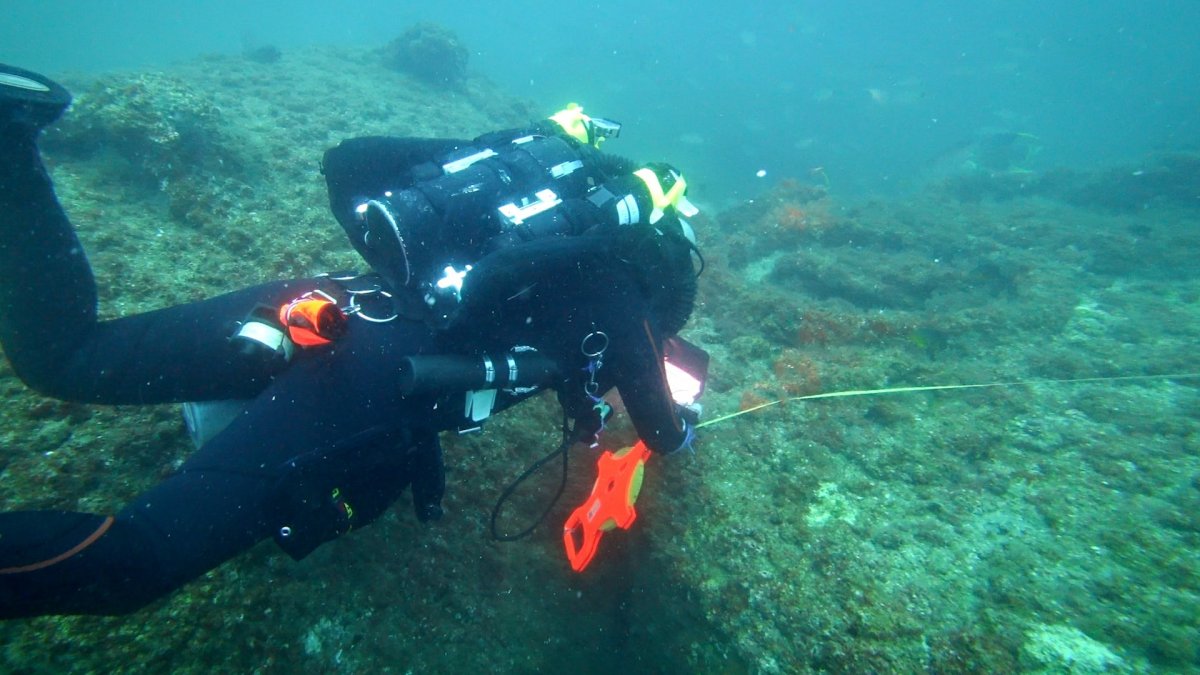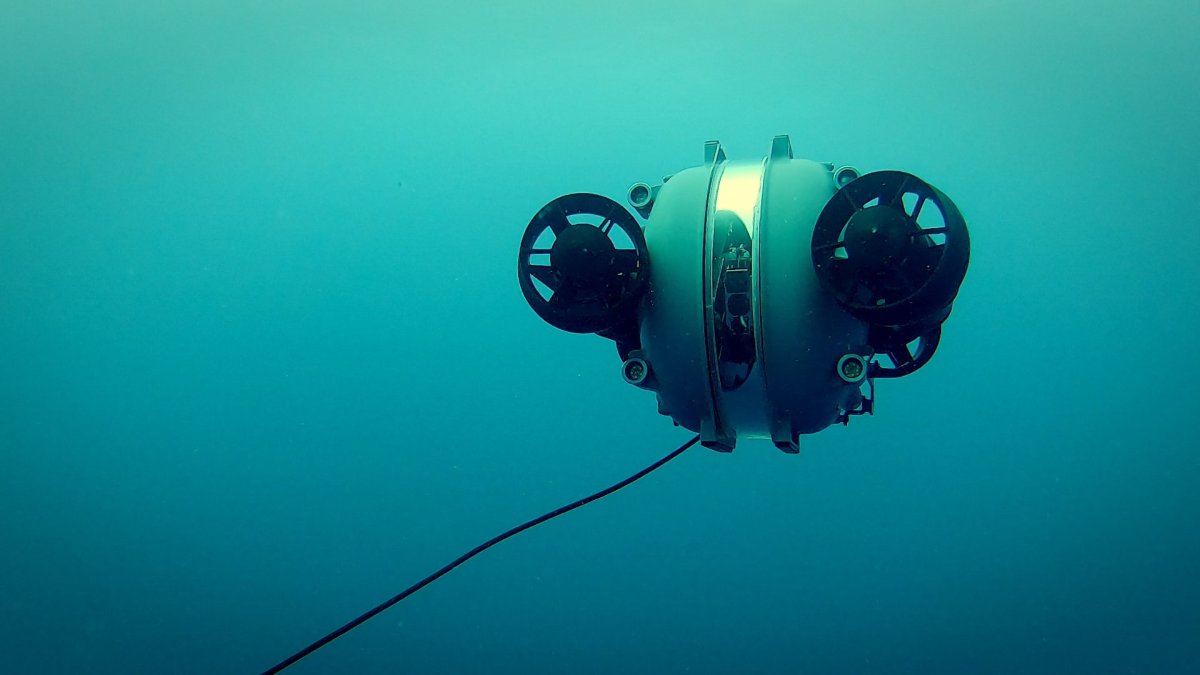The wreckage of a ship that mysteriously went missing in the Bermuda Triangle almost 100 years ago has been discovered off the coast of Florida, a team of researchers has said.
The SS Cotopaxi—an American merchant steamer—left Charleston, South Carolina on November 29, 1925, loaded with coal. But the vessel vanished without a trace before arriving at its final destination, Havana, Cuba.
The fate of the Cotopaxi and the 32 people on board has long puzzled experts, and the ship's disappearance has become one of the famous stories associated with the legend of the Triangle—a notorious region of the western North Atlantic Ocean where several ships and aircraft are said to have gone missing in strange circumstances.
"The Cotopaxi was on a routine voyage," marine biologist and underwater explorer Michael Barnette told Newsweek. "She was employed in the coal trade and so this was just another trip at the end of November of 1925. We know that on that voyage something happened because she delivered a mayday message early December saying she's in distress.
"And then that was it. They never found any wreckage. They never found any lifeboats, bodies or anything. The vessel just disappeared after that point. So we've been trying to determine what happened."
The story of the disappearance of the Cotopaxi has had a colorful past. Film director Steven Spielberg included the vessel in his sci-fi classic Close Encounters of the Third Kind, in which it was discovered in the Gobi Desert, having apparently been placed there by extraterrestrials. In 2015, a news report said the ship had reappeared near a restricted military zone off the coast of Cuba. Various versions of this story emerged in the years that followed. All have been dismissed as hoaxes, however.
Now, after almost a century of uncertainty and speculation, a more realistic explanation has emerged. Barnette and colleagues say they have located the wreck around 35 miles off the coast of St. Augustine, on Florida's northeast coast.
The discovery is revealed in an episode of Shipwreck Secrets, a new Science Channel series that starts next month.
"I've always been fascinated by history," Barnette, who has discovered the wrecks of numerous lost ships over the course of his career, said. "I'm a marine biologist by profession. But maritime history is my real passion. I like going out and trying to identify wrecks because every one has a fascinating story. I'm just a very curious guy."
The search for the wreck began thousands of miles away from the Bermuda Triangle in London, England. Barnette contacted British historian Guy Walters and asked him to dig through the archives of Lloyd's of London, which contains insurance documents related to the ship's fateful voyage.
During his search, Walters managed to uncover evidence that the Cotopaxi had sent out a distress signal on December 1, 1925—a key piece of information that historians had not previously known about.
"A lot of times, it's more important to spend more time in the archives researching than it is on the water, because that's when you will make the discoveries in all these articles for insurance or things of that nature," he told Newsweek.
According to the documents he uncovered, the distress signals were picked up in Jacksonville, Florida, placing the ship in the vicinity of the so-called Bear Wreck—located off the coast of St. Augustine—which has baffled experts for decades.
The waters off the coast of St. Augustine—a thriving port in colonial times—are filled with 16th and 17th century shipwrecks. The Bear Wreck, however, stands out from these in a number of ways. Firstly, it appears to be from the late 19th or early 20th century, and is located much further off the coast than most of the other older shipwrecks. The ship's real name and the reason it sank have long remained a mystery.

With the evidence uncovered by Walters, Barnette and his dive partner Joe Citelli decided to conduct a series of dives at the Bear Wreck in order to look for an artifact that could link it to the Cotopaxi. Specifically, they wanted to find an object with the vessel's name on it—something commonly found on the bell of ships.
However, such discoveries are rare and despite the use of a remotely operated underwater vehicle, the divers did not find what they were looking for, in part, because the wreck is covered in large quantities of sand.
Barnette got in touch with Al Perkins, a diver who has been exploring the Bear Wreck for more than three decades, collecting numerous objects from it in the process. One of the items in his collection seemed to provide a clue to the wreck's origins.
The object was a valve that had been manufactured by a company based around 12 miles from where the Cotopaxi was built—in Ecorse, Michigan. But was this a coincidence or a piece of evidence linking the Bear Wreck to the Cotopaxi?
Barnette reached out to Chuck Meide and Brendan Burke from the St. Augustine Lighthouse & Maritime Museum—two experts on the shipwrecks in the waters surrounding the city.
Under the guidance of Meide and Burke, Barnette conducted more dives to collect measurements of the Bear Wreck. These were then compared with the original plans of the Cotopaxi. The team discovered that numerous features—including the length of the vessel and dimensions of the boilers—matched the measurements they had taken.
Finally, Barnette received a crucial piece of information from Walters, who had been carrying out research at the National Archives of New York. There, the historian found documents from a legal case that the families of some of the missing crewmen had brought against the Cotopaxi's operator—the Clinchfield Navigation company. They argued the ship was unseaworthy and unsuited to rough ocean conditions.
In the documents, the president of the company countered that this was not the case and the only reason the ship sunk was because she had been caught in a large storm off the Florida coast—one that is attested in historical weather records on the day that the Cotopaxi sent out distress signals.
In his testimony the president reported the last known coordinates of the Cotopaxi, which were dated to November 30, 1925. Barnette plotted these coordinates on a map, placing the ship 22 miles north of the Bear Wreck on this date, on what would appear to be the vessel's expected course if it was traveling its regular route from Charleston to Havana.
For the team, this was the final piece of the puzzle linking the Cotopaxi to the Bear Wreck. Given that a storm would strike the area the next day—and the evidence from the legal documents indicating that the vessel was not seaworthy—the researchers also appeared to have uncovered a possible explanation for the ship's sinking.
The team believes these final coordinates, coupled with a distress signal being sent from the ship the next day, and historic records showing a storm had hit the area, are further evidence to show the Bear Wreck the site of the sunken Cotopaxi.
"We approach all these shipwrecks kind of like a cold case murder case, right? You know, you have the body there. You try and gain whatever information you can. There's a whole bunch of tools that we use to try to identify these wrecks," Barnette said.
He described the moment of realization that the Bear Wreck is probably the final resting place of the Cotopaxi as like a "jolt of electricity."

"A lot of times it is very emotional because first you are excited that your theory is correct. There's also an emotional rollercoaster because you realize, 'wait a second, this is a grave site which marks the final resting spot spot of the crew members that went down with the vessel.' So there's a responsibility to try and reach out to the families so we can help give closure to them," he said.
"Myself and other wreck divers around the world, when we identify these wrecks, sometimes we're writing the final chapter in the story or sometimes we're actually rewriting history," he said. "What people assume actually happened sometimes is not the case."
Barnette adds that paranormal explanations for the disappearances of ships and aircraft in the Bermuda Triangle—which have frequently been debunked by experts—often distract from what's really important.
"Each one of these shipwreck stories is their own saga, and a lot of times you kind of hit on the Bermuda Triangle. But the Bermuda Triangle is not the story, it's the drama that unfolds on these individual shipwrecks, and aircraft."
Their research and findings can be seen in the premiere episode of the new Science Channel series, Shipwreck Secrets, premiering February 9 at 8 p.m. EST. Subsequent episodes will premiere on Sunday nights at 9 p.m.
Uncommon Knowledge
Newsweek is committed to challenging conventional wisdom and finding connections in the search for common ground.
Newsweek is committed to challenging conventional wisdom and finding connections in the search for common ground.
About the writer
Aristos is a Newsweek science reporter with the London, U.K., bureau. He reports on science and health topics, including; animal, ... Read more
To read how Newsweek uses AI as a newsroom tool, Click here.








